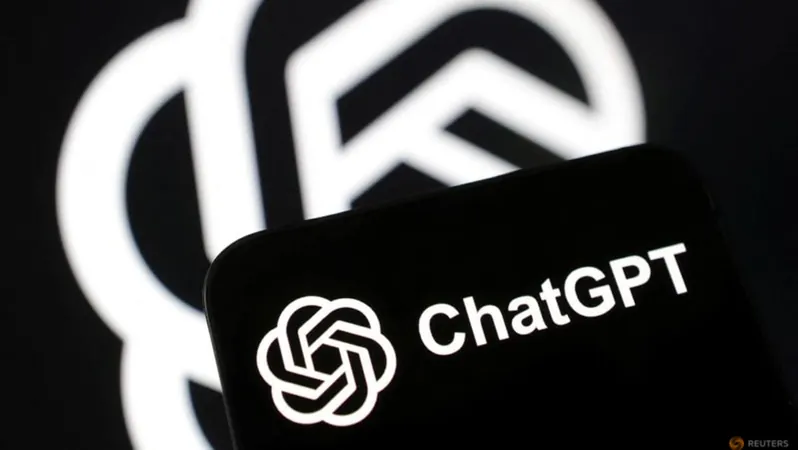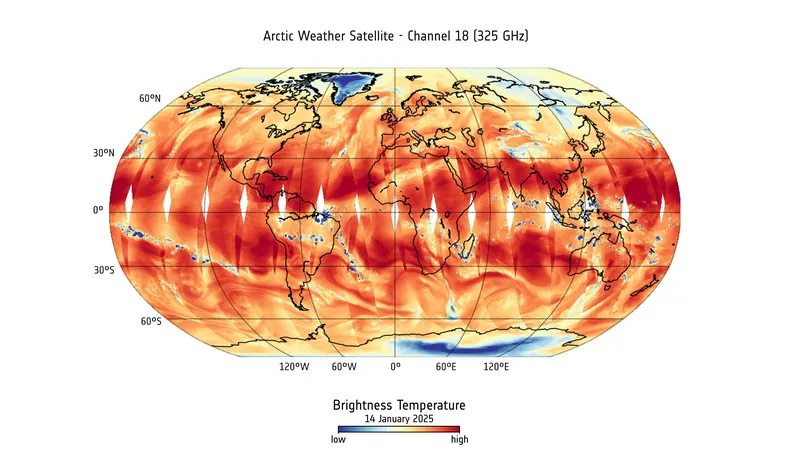
Unleashing the Ghibli Effect: ChatGPT User Surge Breaks Records!
2025-04-01
Author: Jia
In a stunning turn of events, the rollout of a new image-generation feature in ChatGPT has triggered a worldwide craze for creating Ghibli-style AI art, resulting in a historic spike in user engagement that strained OpenAI's servers.
The phenomenon, dubbed the "Ghibli effect," has seen enthusiastic users from all corners of the globe flooding social media platforms with stunning visuals inspired by the iconic hand-drawn artistry of Studio Ghibli. Founded by the legendary filmmaker Hayao Miyazaki, the studio is celebrated for cinematic gems like "Spirited Away" and "My Neighbor Totoro," which have tremendously influenced animation culture throughout the years.
According to data from market research firm Similarweb, average weekly active users on ChatGPT soared past 150 million for the first time this year, marking a significant achievement for the company. Sam Altman, CEO of OpenAI, shared an impressive statistic on social media, highlighting that the platform gained one million new users in just one hour—an incredible feat compared to the five days it took to reach the same milestone following the chatbot's explosive launch over two years ago.
Recent data from SensorTower indicated that not only did app downloads and weekly active users increase — by 11% and 5% respectively — but in-app subscription revenue saw a 6% boost as well, following the deployment of updates to the newly refined GPT-4o model. This model brought forth advanced capabilities for image generation that have captured users' imaginations.
However, the surge in activity hasn’t come without its challenges. Users have reported glitches and occasional outages as OpenAI works to manage the heightened traffic. Altman reassured fans that while they are addressing these capacity issues, users might experience delays in new releases and occasional slow service.
In a twist that adds complexity to this trend, experts are voicing concerns over potential copyright violations stemming from the Ghibli-style art. Evan Brown, an attorney with Neal & McDevitt, pointed out that copyright law traditionally protects specific expressions rather than broader artistic styles. This raises intriguing questions about the legality of AI-generated images that closely mimic Studio Ghibli's aesthetic.
Comments from Hayao Miyazaki dating back to 2016 have also resurfaced amidst the excitement, in which the director expressed disdain towards AI-generated images. "I am utterly disgusted,” he remarked at the time, adding that he had "no desire" to integrate such technology into his creative processes.
As the popularity of the Ghibli effect continues to rise, both users and creators alike are left pondering the implications of AI in art, while eagerly awaiting how OpenAI will navigate this dynamic and evolving landscape. Will this phenomenon signal a new era for creativity, or will it lead to a clash between innovation and artistic integrity? Stay tuned as we cover the unfolding drama in the world of AI art creation!

 Brasil (PT)
Brasil (PT)
 Canada (EN)
Canada (EN)
 Chile (ES)
Chile (ES)
 Česko (CS)
Česko (CS)
 대한민국 (KO)
대한민국 (KO)
 España (ES)
España (ES)
 France (FR)
France (FR)
 Hong Kong (EN)
Hong Kong (EN)
 Italia (IT)
Italia (IT)
 日本 (JA)
日本 (JA)
 Magyarország (HU)
Magyarország (HU)
 Norge (NO)
Norge (NO)
 Polska (PL)
Polska (PL)
 Schweiz (DE)
Schweiz (DE)
 Singapore (EN)
Singapore (EN)
 Sverige (SV)
Sverige (SV)
 Suomi (FI)
Suomi (FI)
 Türkiye (TR)
Türkiye (TR)
 الإمارات العربية المتحدة (AR)
الإمارات العربية المتحدة (AR)